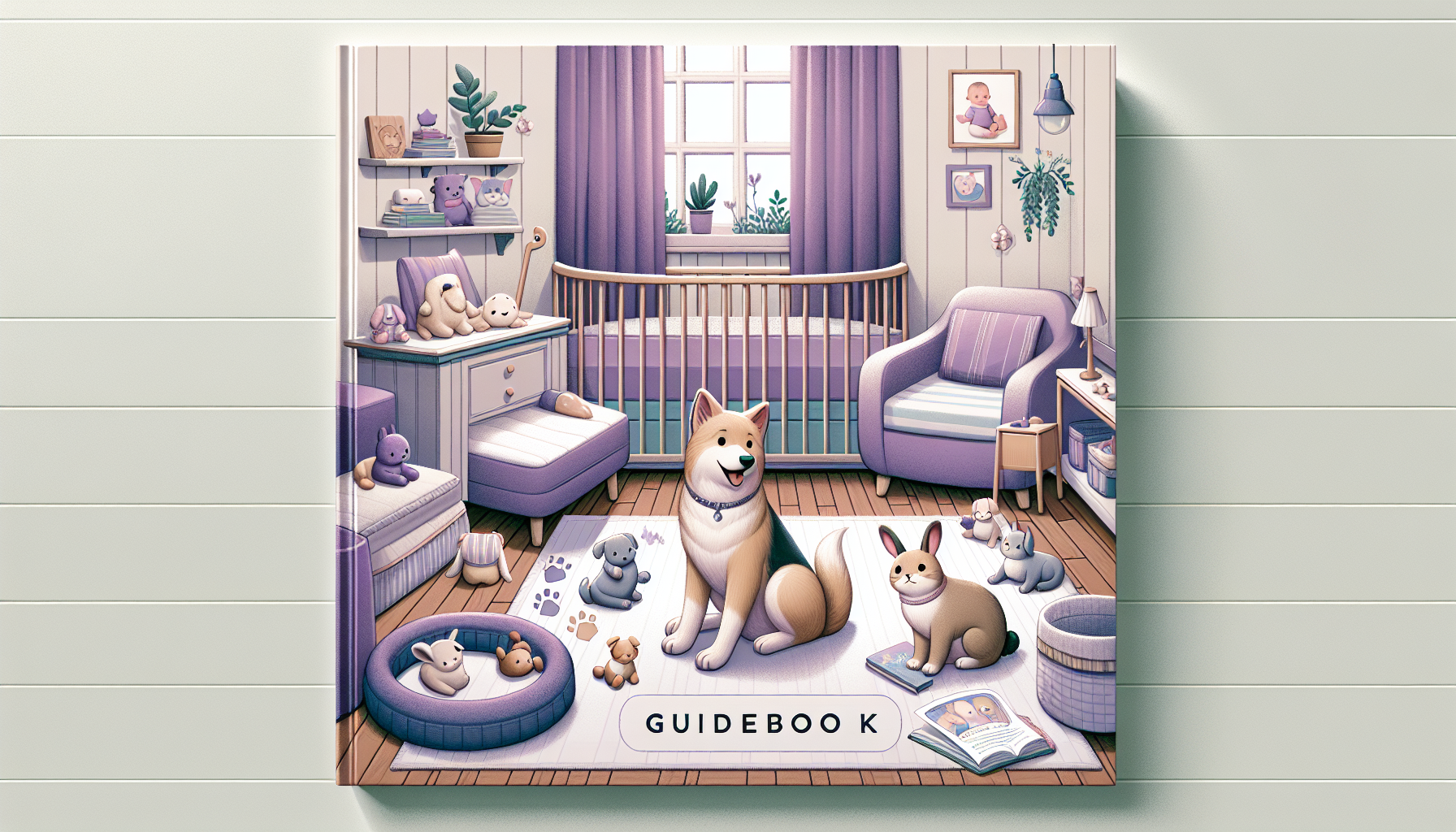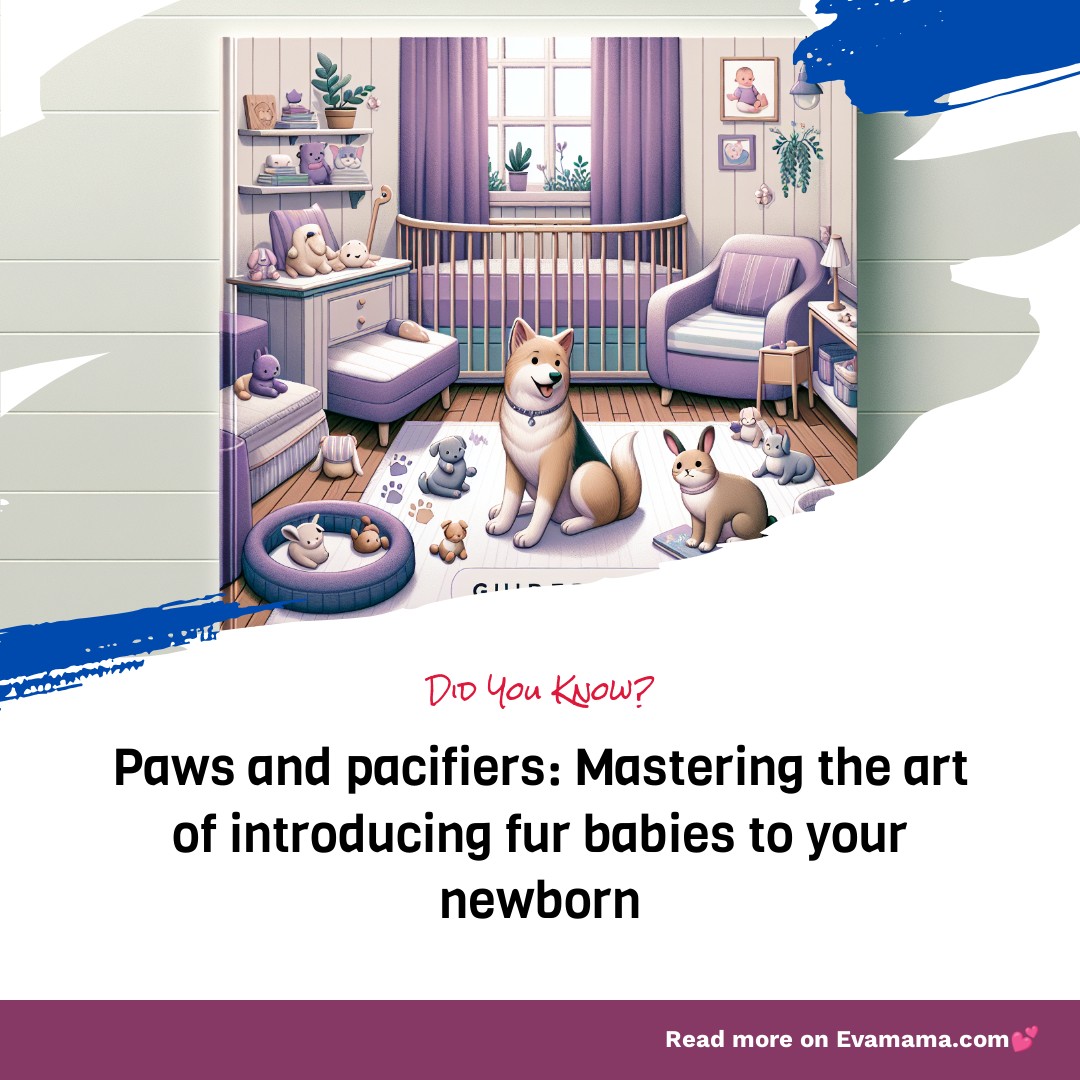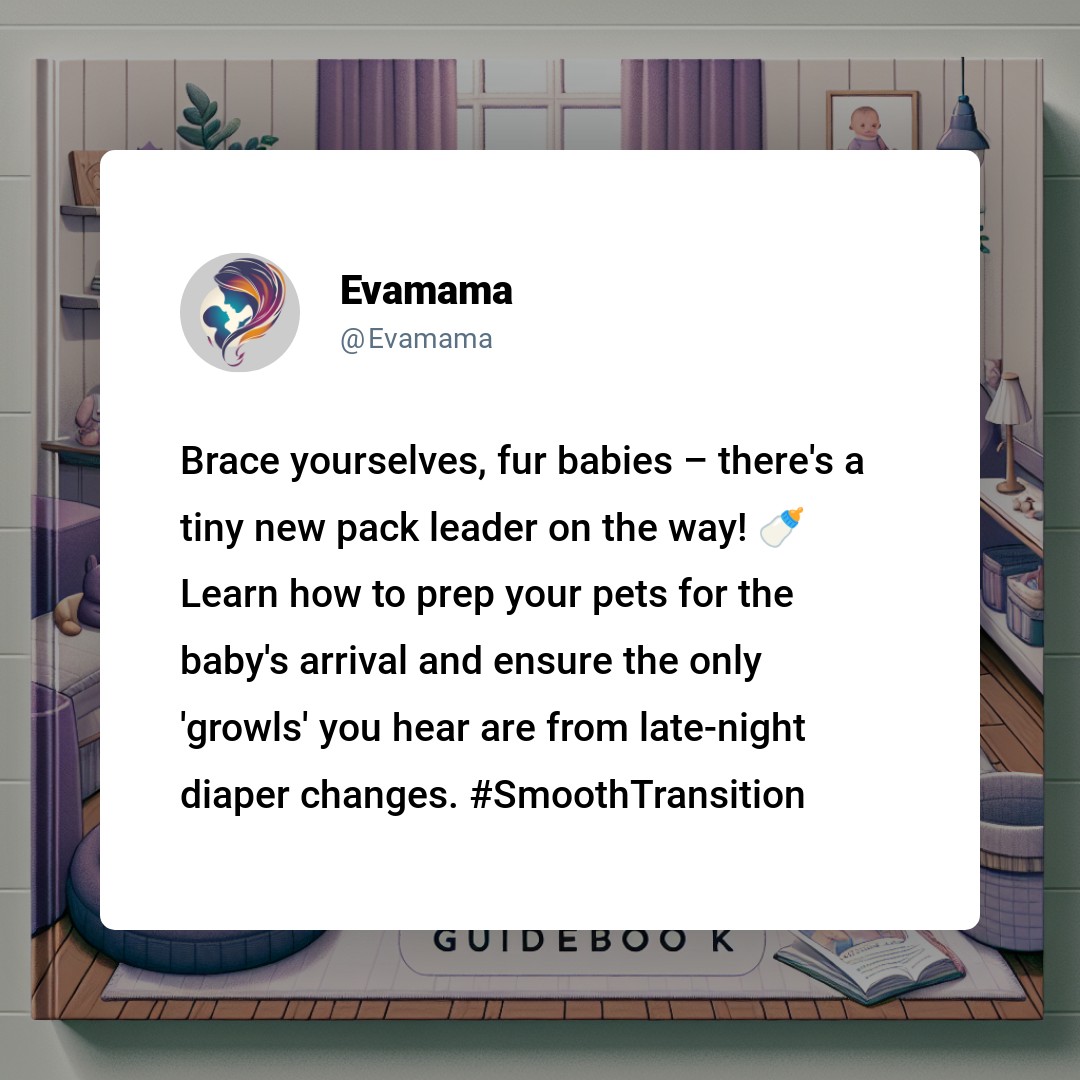Preparing Pets for Your New Baby: Top Tips for a Harmonious Home
Preparing pets for your new baby is about creating harmony in your home. As you nest and knit tiny socks, your furry friend might be feeling the seismic shift in their world, too. Ever noticed how pets pick up on the slightest change in routine, like detectives sniffing out a mystery?
That first whiff of baby lotion or the soft hum of a lullaby can send tails wagging with curiosity or tucking with uncertainty. I’ve been there, navigating the furry minefield of pet and baby relations, learning that a smooth transition is more than possible—it’s a journey filled with tender sniffs and gentle paws.
In the dance of diapers and paws, I’ll guide you through the steps to ensure your pet and baby waltz together in harmony, addressing the silent questions your four-legged companion can’t ask. Let’s turn potential chaos into a chorus of coos and purrs, crafting a home where love multiplies with every new heartbeat.

Preparing Pets for Your New Baby: A Guide to a Smooth Transition

Step 1: Gradual Introductions are Key
Imagine you’re hosting a foreign exchange student; you wouldn’t just throw them into your family’s daily routine without a proper welcome, right? The same goes for introducing your pet to your new baby. Start by allowing your pet to investigate the baby’s nursery and any gear like strollers or car seats. This familiarizes them with new scents and objects, making the actual introduction less overwhelming.
Step 2: Scent Familiarization Before the First Meeting
Before the baby arrives home, bring an item carrying the baby’s scent, such as a blanket, for your pet to sniff. This helps your pet recognize the baby as part of the family pack. It’s like getting a sneak peek at a friend’s new perfume before you meet up-it takes the surprise out of the first encounter.
Step 3: Positive Associations Make All the Difference
When the baby comes home, greet your pet without the baby first. This prevents jealousy. Then, introduce them with the baby at a safe distance. Reward your pet with treats for calm behavior around the baby. Think of it as giving a gold star for good behavior-it reinforces the positive experience.
Step 4: Commands and Treats to Manage Behavior
Your pet should already respond to basic commands like ‘sit’ and ‘stay.’ If not, consider a refresher obedience course. Use these commands during introductions to maintain control. Offer treats as rewards for obeying. It’s like using a bookmark to Most importantly a page in a book-commands help your pet pause and What’s expected.
Step 5: Creating a Safe Shared Environment
Safety is important. Use baby gates or playpens to create safe zones for both the baby and pet. Ensure the pet has its own space to retreat to when overwhelmed. It’s like setting up different zones in a game-each player has a safe home base.
Step 6: Adjusting Your Pet’s Schedule
Babies have demanding schedules, and your pet will need to adjust. Gradually shift your pet’s feeding or walking times to align with the baby’s routine. It’s like adjusting to a new time zone-you’re helping your pet adapt to the new family rhythm.
Step 7: Supervision is Non-Negotiable
Never leave your baby and pet alone together. Always supervise interactions, no matter how trustworthy your pet seems. It’s like having a lifeguard at the pool-precaution is of the essence, even if everyone knows how to swim.
Step 8: Recognize Your Pet’s Cues
Learn to read your pet’s body language. Signs of stress or jealousy may include pacing, whining, or a tucked tail. Address these feelings early. It’s like noticing a friend’s subtle hints that they’re uncomfortable at a party-you want to check in and make sure they’re okay.
Step 9: Consistency and Patience Win the Race
Maintain a consistent routine and be patient. Pets and babies both thrive on predictability. It’s like sticking to a workout schedule-the results come with time and consistency.
Step 10: Celebrate the Small Victories
Acknowledge and celebrate small milestones in the pet-baby relationship. A peaceful nap time together or a gentle petting session deserves recognition. It’s like marking off goals on a to-do list-every check is a step forward.
Creating Positive Pet and Baby Interactions: A Checklist
| Action Item | Description |
|---|---|
| Introduce Nursery Items | Let your pet investigate baby gear to become familiar with new items. |
| Scent Introduction | Give your pet a blanket or clothing with the baby’s scent. |
| Controlled Greetings | Introduce your pet to the baby with treats and praise for calm behavior. |
| Use Commands | Reinforce obedience training with commands during introductions. |
| Safe Zones | Set up baby gates or playpens to create safe areas for both pet and baby. |
| Schedule Adjustments | Align your pet’s routine with the baby’s to ease the transition. |
| Supervision | Always monitor interactions between your pet and baby. |
| Read Body Language | Be attuned to your pet’s stress signals and address them promptly. |
| Be Consistent | Keep routines predictable for both pet and baby. |
| Celebrate Milestones | Recognize and reward peaceful interactions between your pet and baby. |
Understanding and Managing New Pet Behaviors Post-Baby Arrival

Bringing home a new baby is a joyous occasion, but it can also be a time of adjustment for your furry family members. Pets may exhibit changes in behavior as they acclimate to the new addition to your household. Recognizing these changes and knowing how to manage them can help ensure a smooth transition for everyone.
Recognizing Signs of Stress in Your Pet
Spotting the Subtle Cues: Your pet may not be able to verbalize their feelings, but they can certainly show signs of stress. Look for changes in appetite, excessive grooming, or a sudden lack of interest in play. These can be indicators that your pet is struggling to adapt to the new family dynamics.
The Telltale Behaviors: More obvious signs include increased vocalization, such as barking or whining, or even accidents in the house from a previously house-trained pet. These behaviors are your pet’s way of expressing their anxiety about the changes in their environment.
Maintaining a Consistent Routine
The Power of Predictability: Pets thrive on routine, and maintaining a consistent schedule for feeding, walks, and playtime can provide a sense of security amidst the changes. Even with a new baby in the house, try to keep your pet’s routine as regular as possible.
Involving the Whole Family: Delegate pet-related tasks among family members to ensure that your pet’s needs are met without overwhelming any one person. This can also be a great way for other family members to bond with the pet during this transition period.
Training and Reinforcement
Positive Reinforcement Works Wonders: Use treats and praise to reinforce good behavior in your pet. If they remain calm when the baby cries or when new people visit, let them know they’ve done well. This not only encourages good behavior but also helps build a positive association with the baby.
Consistency is Key: When training your pet, consistency is of the essence. Ensure that all family members are on the same page with commands and rewards to avoid confusing your pet.
Creating a Calm Home Environment
Introduce Baby Sounds and Smells: Before the baby arrives, play recordings of baby sounds and introduce baby-related scents to your pet. This can help them become familiar with what’s to come and reduce their stress when the baby is home.
Designate a Safe Space: Give your pet their own safe space where they can retreat to when they need a break from the baby’s cries or the hustle and bustle of visitors. This can be a cozy bed in a quiet room or a special spot with their favorite toys.
Practical Tips for a Stress-Free Home
Exercise is Needed: Regular exercise can help reduce your pet’s anxiety. A tired pet is often a happy pet, so make sure they get plenty of physical activity.
Mindful Introductions: When it’s time to introduce your pet to the new baby, do so in a controlled and calm manner. Keep your pet on a leash if necessary and allow them to sniff and observe from a safe distance.
Table of Comfort Strategies:
| Strategy | Description | Implementation |
|---|---|---|
| Routine Maintenance | Keep feeding and playtimes consistent. | Set specific times for pet-related activities. |
| Positive Reinforcement | Reward calm behavior around the baby. | Use treats and affection as rewards. |
| Safe Space | Provide a quiet area for your pet. | Set up a bed or crate in a low-traffic area. |
| Controlled Introductions | Gradually introduce your pet to the baby. | Allow pet to observe baby from a distance initially. |




